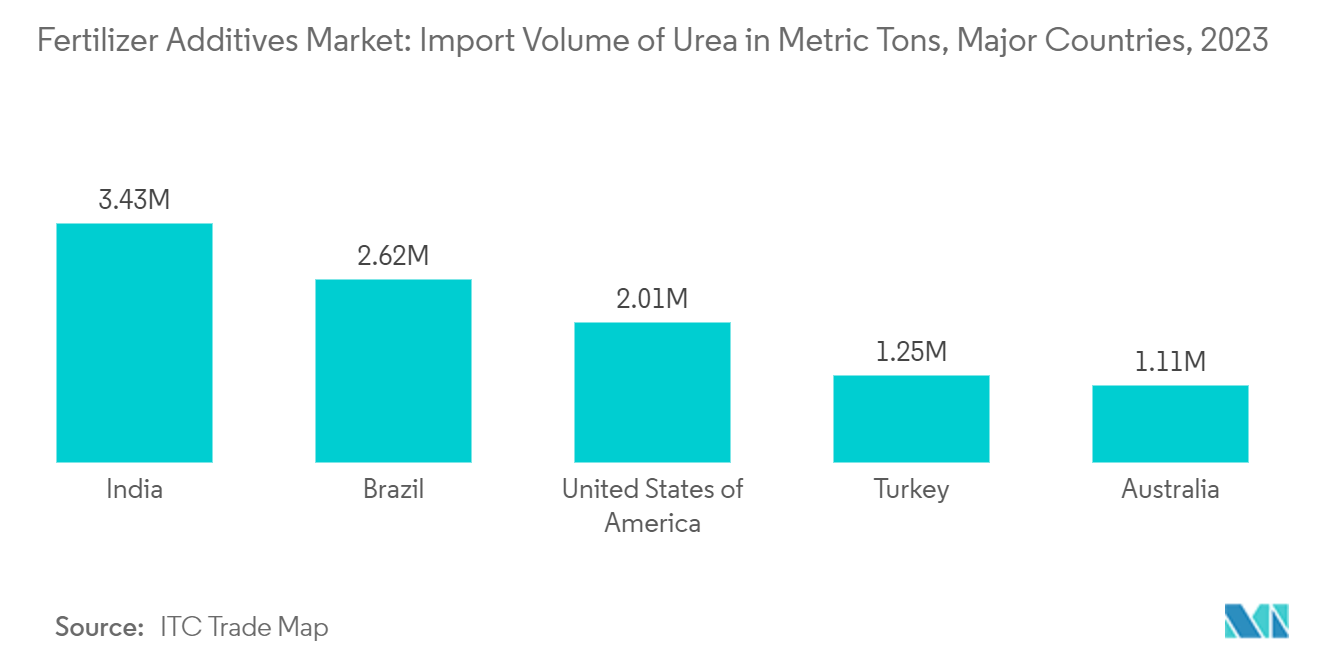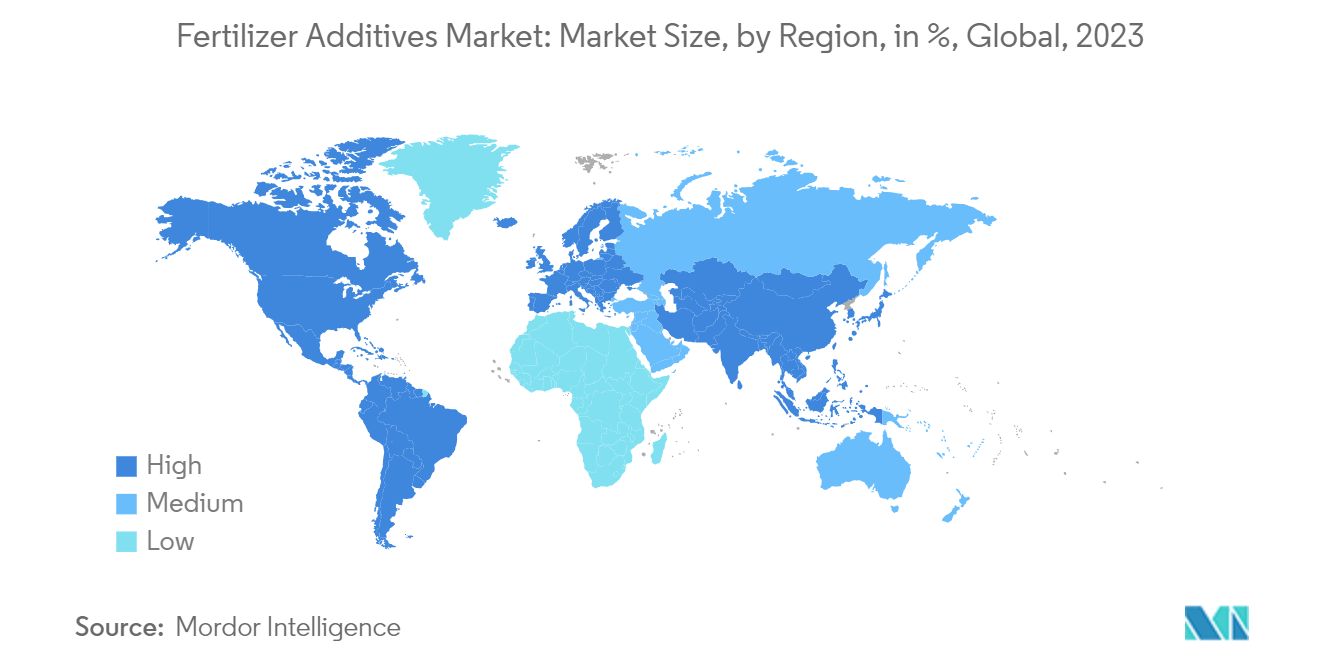Market Trends of Fertilizer Additives Industry
Inhibitors Leads the Market
Inhibitors are compounds integrated into nitrogen-based fertilizers to minimize losses post-application. These nitrogen stabilizer additives fall into two main categories, urease inhibitors and nitrification inhibitors. Such inhibitors promote plant growth, uphold soil quality, and enhance crop quality. The agriculture industry's surging demand for these nitrogen fertilizer additives propels the market growth. Farmers increasingly turn to urease inhibitors to curb nitrous oxide emissions and nitrification inhibitors to mitigate nitrate pollution in water. Furthermore, these additives bolster soil health and enhance plants' access to vital water and nutrients. With the agriculture sector expanding and fertilizer additives evolving, the market for nitrogen fertilizer additives is set to see heightened consumption.
Globally, the increasing demand for urea-based fertilizers is a key driver of market growth. For instance, data from the International Fertilizers Association (IFASTAT) reveals that global urea consumption rose from 53,760.3 thousand metric tons in 2021 to 54,168.9 thousand metric tons in 2022. Urea, with the highest nitrogen content among solid fertilizers, serves as a primary nitrogen source in agriculture. Its high relative humidity enables it to withstand hot and humid conditions, making it a preferred choice over ammonium nitrate and calcium ammonium nitrate (CAN). Additionally, its versatility in both solid and liquid forms boosts its market demand. However, challenges remain,such as urea nitrogen is prone to losses through volatilization, denitrification, and leaching. In humid regions like Brazil, these losses can be substantial, with 20-30% of the applied nitrogen being lost, and in 2022, some instances even peaked at 60%. As fertilizer additives, particularly urease inhibitors, aim to reduce these volatilization losses, their rising demand further accelerates the growth of the fertilizer additive market.
Additionally, technological innovations are augmenting the growth of the market studied. According to a study by Agriculture and Agri-Food Canada, in 2022, the use of ammonium thiosulphate as a urease inhibitor with the varying surface placement of urea and urea ammonium nitrate in the production of hard red spring wheat under reduced tillage management. TIB Thio ATS, by TIB Chemicals, is one of the popular ammonium thiosulphate inhibitors sold in the North American region.

Asia-Pacific Dominates the Market
Asia-Pacific dominates the global fertilizer additives market, accounting for over half of its share. Major consumers, China and India, leverage their expansive agricultural zones. For example, the Fertilizer Association of India reported a total fertilizer consumption of 63.9 million metric tons in 2023, marking a 0.3% decline from 2022. Additionally, the all-India NPK use ratio shifted from 7.7:3.1:1 in 2022 to 11.8:4.6:1 in 2023.
Moreover, the Indian government is actively promoting fertilizer consumption through various subsidies and grants. For instance, in February 2024, the Indian government sanctioned a subsidy of USD 290.3 million for phosphatic and potassic (P&K) fertilizers. This initiative, which introduced three new grades of fertilizers, aims to assist farmers and boost the productivity of oilseeds and pulses. While this move has led to increased fertilizer usage, it has also highlighted challenges such as inefficient fertilizer uptake and volatilization losses in Indian soils. These challenges underscore the growing demand for fertilizer additive products, bolstering market growth. Consequently, the uptick in fertilizer consumption in the region is propelling the market's expansion. Among nitrogenous fertilizers, urea stands out as the predominant choice in India, constituting over 80% of the nation's total nitrogen fertilizer consumption.
China stands as one of the world's foremost producers and consumers of fertilizers, driven by its expansive agricultural sector. The nation leans heavily on fertilizers to satisfy crop nutritional needs and enhance agricultural productivity. Furthermore, China's vegetable production heavily relies on fertilizers, leading to diminished nitrogen usage efficiency in its soils. Numerous research initiatives within the country aim to bolster soil effectiveness and enhance nutrient uptake from fertilizers. For instance, in 2022 study conducted by the National Center for Biotechnology Information (NCBI), highlighted the benefits of nitrification inhibitors. The study underscored these additives' role in boosting yield, enhancing nitrogen use efficiency, and curbing nitrous oxide emissions. Such promising findings on fertilizer additives bolster the industry's expansion in China.


